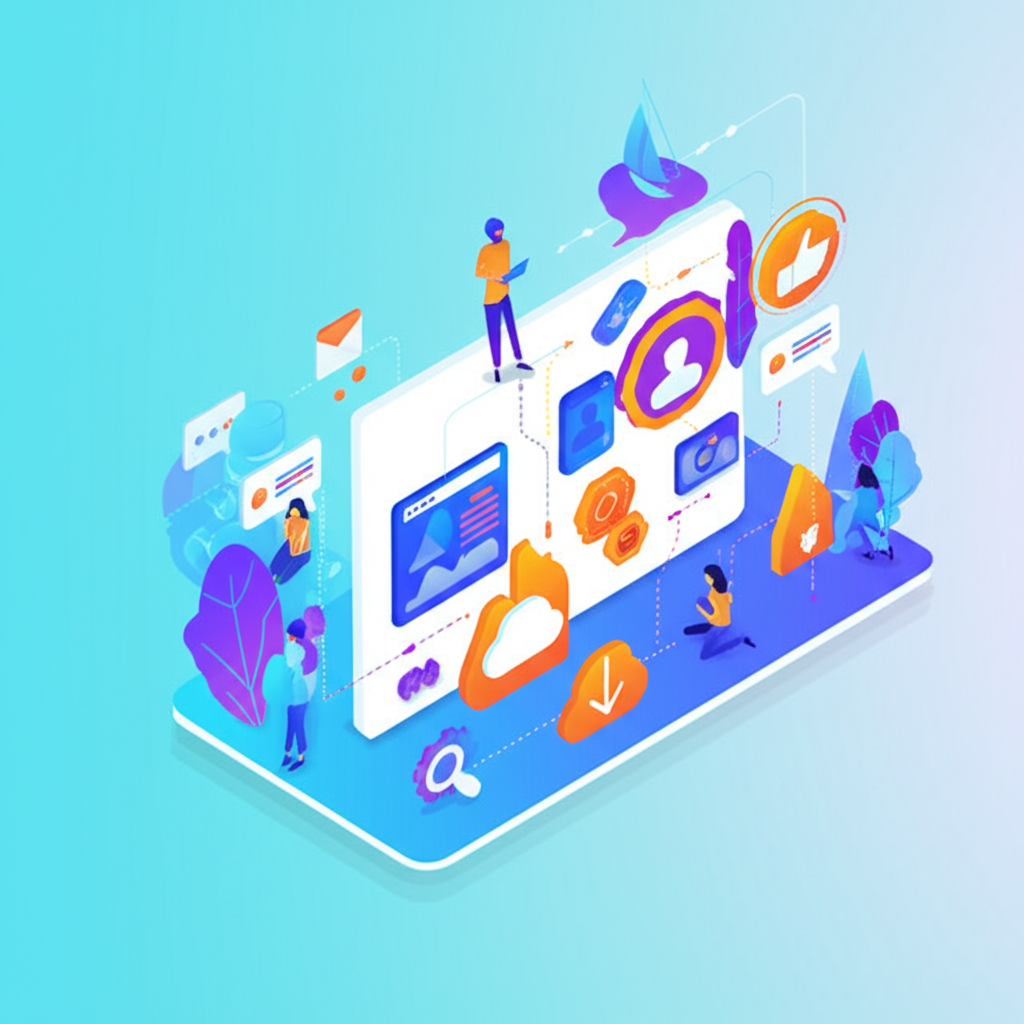Turning Your Web Application Into a Revenue Generator
Building a great web application is only half the battle—creating a sustainable business requires an effective monetization strategy. The right approach to monetization can make the difference between a passion project and a thriving business.
Common Monetization Models for Web Applications
1. Subscription-Based (SaaS) Model
The subscription model has become the dominant approach for web application monetization, offering predictable recurring revenue and strong customer relationships.
Key Considerations:
- Pricing tiers based on features, usage limits, or user seats
- Billing frequency options (monthly vs. annual with discount)
- Free trial period length and conversion strategy
- Upgrade/downgrade paths between tiers
Best For:
Applications that provide ongoing value, have regular updates, or store user data. Examples include project management tools, CRM systems, and design applications.
2. Freemium Model
The freemium approach offers a free basic version with premium features available for paying users. This model excels at user acquisition while still providing monetization opportunities.
Key Considerations:
- Balance between free and premium features
- Clear upgrade incentives without crippling the free version
- Conversion rate optimization from free to paid
- Cost management for free users
Best For:
Applications with network effects, collaboration features, or where users need to experience value before paying. Examples include communication tools, basic productivity apps, and content platforms.
3. Transactional/Usage-Based Model
This model charges based on specific actions or usage levels, aligning costs directly with the value received.
Key Considerations:
- Transparent pricing structure
- Usage monitoring and reporting for users
- Potential for unpredictable revenue
- Balancing simplicity with fair pricing
Best For:
Applications with variable usage patterns or where value is tied to specific actions. Examples include payment processing tools, API services, and data processing applications.
4. Marketplace/Commission Model
This approach generates revenue by facilitating transactions between users and taking a percentage of each transaction.
Key Considerations:
- Commission rate balancing
- Building sufficient liquidity (buyers and sellers)
- Payment processing and escrow systems
- Trust and safety mechanisms
Best For:
Platforms connecting distinct user groups for transactions. Examples include freelance marketplaces, digital product marketplaces, and booking platforms.
5. Advertising Model
While challenging for many web applications, advertising can work for content-rich platforms with large user bases.
Key Considerations:
- User experience impact
- Traffic volume requirements
- Ad targeting capabilities
- Potential for ad-free premium tier
Best For:
Content-focused applications with large audiences. Examples include news platforms, entertainment applications, and some community forums.
Hybrid Approaches
Many successful web applications combine multiple monetization models. For example:
- Freemium + In-app purchases
- Subscription + Usage-based components
- Marketplace + Subscription for premium features
These hybrid approaches can maximize revenue while addressing different user segments and use cases.
Pricing Strategy Best Practices
1. Value-Based Pricing
Price based on the value your application delivers rather than just covering costs. Consider:
- Quantifiable benefits (time saved, revenue increased, costs reduced)
- Competitive alternatives and their pricing
- Willingness to pay across different customer segments
2. Psychological Pricing Tactics
Leverage psychological principles in your pricing presentation:
- Price anchoring with multiple tiers
- Decoy pricing to guide users toward preferred options
- Bundle pricing for higher perceived value
- Charm pricing (e.g., $49 instead of $50)
3. Regular Price Testing
Pricing shouldn't be static. Implement a systematic approach to testing:
- A/B testing of different price points
- Feature packaging experiments
- Promotional offers to gauge price sensitivity
- Customer surveys and feedback collection
Maximizing Customer Lifetime Value
1. Onboarding Optimization
A strong onboarding experience increases activation and retention:
- Guide users to their first "aha moment" quickly
- Provide contextual help and resources
- Implement progress tracking and celebration
- Personalize the experience based on user needs
2. Expansion Revenue Strategies
Look for opportunities to increase revenue from existing customers:
- Upselling to higher tiers
- Cross-selling complementary features or services
- Usage expansion for metered components
- Add-on modules for specific use cases
3. Retention Tactics
Keeping customers is typically more cost-effective than acquiring new ones:
- Regular engagement through email and in-app messaging
- Proactive support for at-risk customers
- Loyalty programs or long-term commitment discounts
- Continuous feature improvements based on user feedback
Implementation Considerations
1. Payment Processing
Select payment providers that balance:
- Transaction fees and pricing structure
- Supported payment methods
- Global coverage if needed
- Subscription management capabilities
- Security and compliance features
2. Analytics and Metrics
Implement robust tracking of key monetization metrics:
- Customer Acquisition Cost (CAC)
- Lifetime Value (LTV)
- Conversion rates at each funnel stage
- Churn rate and retention cohorts
- Average Revenue Per User (ARPU)
3. Legal and Compliance
Ensure your monetization approach addresses:
- Clear terms of service and pricing
- Tax collection and reporting requirements
- Data privacy regulations
- Industry-specific compliance needs
Case Study: Evolution of a SaaS Monetization Strategy
A project management SaaS initially launched with a simple three-tier subscription model but evolved their approach based on user feedback and usage patterns:
- Added a free tier with limited projects to increase acquisition
- Introduced per-seat pricing for larger teams
- Developed add-on modules for specific industries
- Created an annual billing option with 20% discount
- Implemented a customer success program that increased enterprise retention by 25%
This evolution increased their average customer lifetime value by over 60% while maintaining strong growth.
Conclusion
Effective monetization is both an art and a science. The most successful web applications take a deliberate, data-driven approach to pricing and packaging while remaining flexible enough to evolve as market conditions and user needs change.
Remember that monetization strategy isn't just about maximizing short-term revenue—it's about creating sustainable value exchange that benefits both your business and your users. When users feel they're receiving significant value relative to what they're paying, they become not just customers but advocates for your application.


